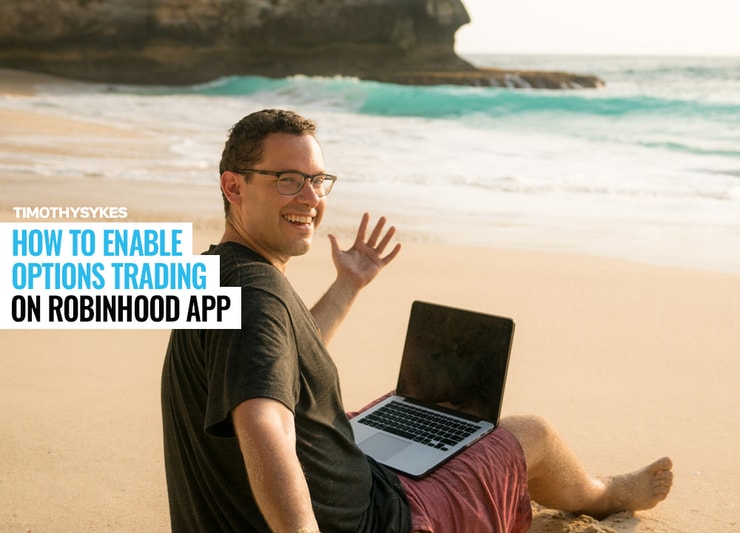You need to enable options trading on the Robinhood app before you start trading them. Robinhood does this to protect newer traders, as they’re more likely to experience big losses when options trading.
That’s no good for Robinhood either.
How do you start trading options on your Robinhood account? Read on to find out!
New to options trading? Learn more about the basics of options trading first.
Table of Contents
How to Enable Options on Robinhood

2025 Millionaire Media, LLCWhen you open a Robinhood account, options trading isn’t available right off the bat. You need to activate it first.
You’ll also need to meet certain eligibility requirements, ensuring you’re prepared for this advanced trading form.
This is a common broker practice, because advanced options strategies deal in higher levels of leverage. Your broker needs to trust that you know what you’re doing.
If you’re new to this, don’t worry; educational resources are available to help you get up to speed.
Here’s how to start accessing the options market on Robinhood’s mobile platform and website:
Step 1: Click “Account” on the App Home Screen
First, log into your account and click the Account option on the home screen.
Step 2: Find the “Settings” Option in the Drop-Down Menu
In the Account menu, click on Settings.
More Breaking News
- Legal Strife Hits Albertsons: Potential Market Ripples
- Ford Extends Discounts to Boost Model Sales
- Analyzing Netflix’s Recent Surge and Future Prospects
You should see an Investing button inside your Settings page. If you’re not already signed up, you should see a Get Options Trading button.
You’ll need to agree to an options trading agreement and risk disclosure.
Step 4: Press “Enable” if Options Are Available for Your Trading Account
Click on Get Options Trading. Then verify your credentials and answer the questions. These questions gauge your trading experience and knowledge, as well as your financial situation.
Click Accept when you’ve answered all the questions. Robinhood will review your answers and investment profile. They’ll contact you soon after. If you’re approved, you’ll be allowed to trade options on Robinhood.
Read this guide to options trading on Robinhood once you’re approved.
Why Can’t I Enable Option Trading on Robinhood?

2025 Millionaire Media, LLCYou likely can’t enable options trading on Robinhood because you don’t have enough experience. Robinhood reviews every request for options trading, just like other brokers.
Robinhood’s review process ensures that you have a sufficient balance and trading experience required for options trading.
Before enabling options, consider your investment objectives and risk tolerance to ensure it aligns with your trading goals.
The review process is a risk management measure. This helps online brokers protect beginner investors from losing money on options trades, and prevents the broker from losing money in the process too.
Need to redo your options trading questionnaire? Learn how options trading works before trying again.
Options Approval Levels
Robinhood has two levels of options trading approval.
After approval, you can select your preferred trading strategies based on the options approval level you’ve been granted. Be aware that there are restrictions on certain types of options trading depending on your approval level.
New options traders start at Level 2 and have access to basic options trading strategies. This is the lowest level for options transactions. Examples of basic options strategies include:
- Covered calls
- Covered puts
- Long calls
- Long puts
Level 3 approval gives access to complex strategies like:
- Credit spreads
- Debit spreads
- Iron condors
- Iron butterflies
How to Close Positions on Robinhood

2025 Millionaire Media, LLCOnce you’re actively trading options, it’s crucial to monitor your positions and track performance. If you run into any issues, don’t hesitate to contact customer support for assistance.
Closing a position means you’re selling an options contract to the market. Here’s how you do it on the Robinhood brokerage platform:
- Use the Search menu to find the stock you want to close the position on.
- Click on the stock to check its details.
- Tap the Trade menu on the stock details page.
- Choose Trade Option, then the Call Option button to sell your contracts.
Want to learn more about options? Sign up for my former student Mark Croock’s Evolved Trader program!








Leave a reply